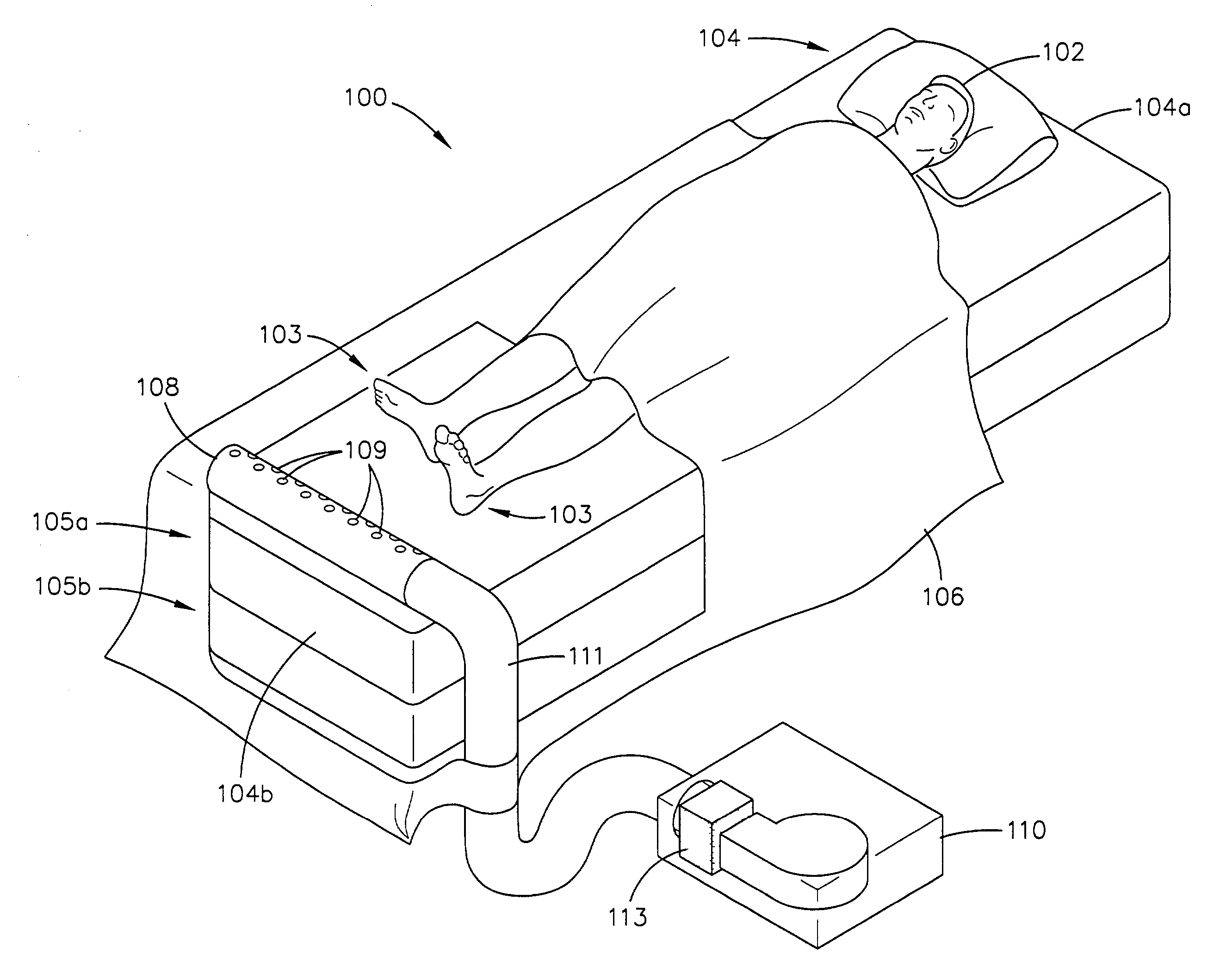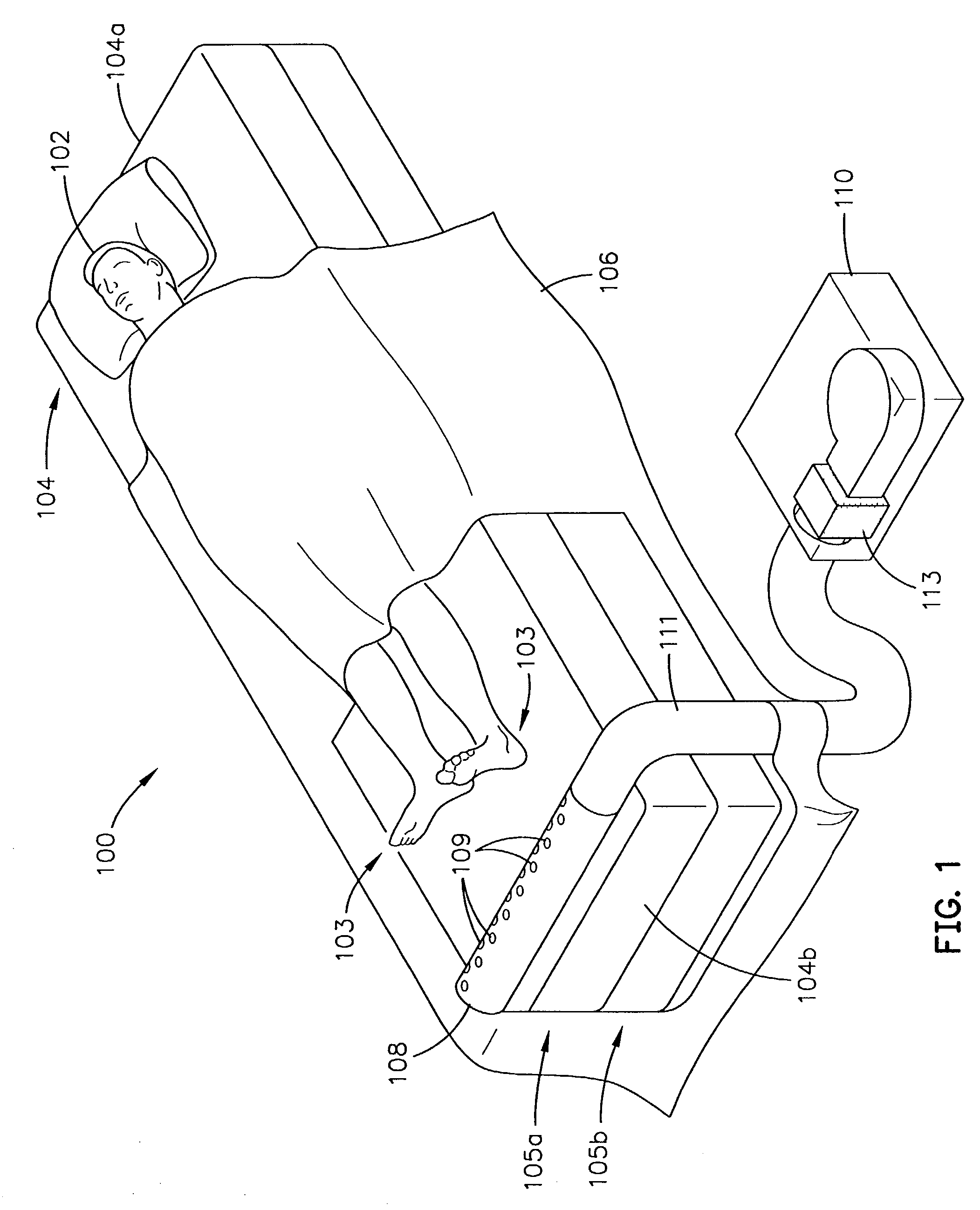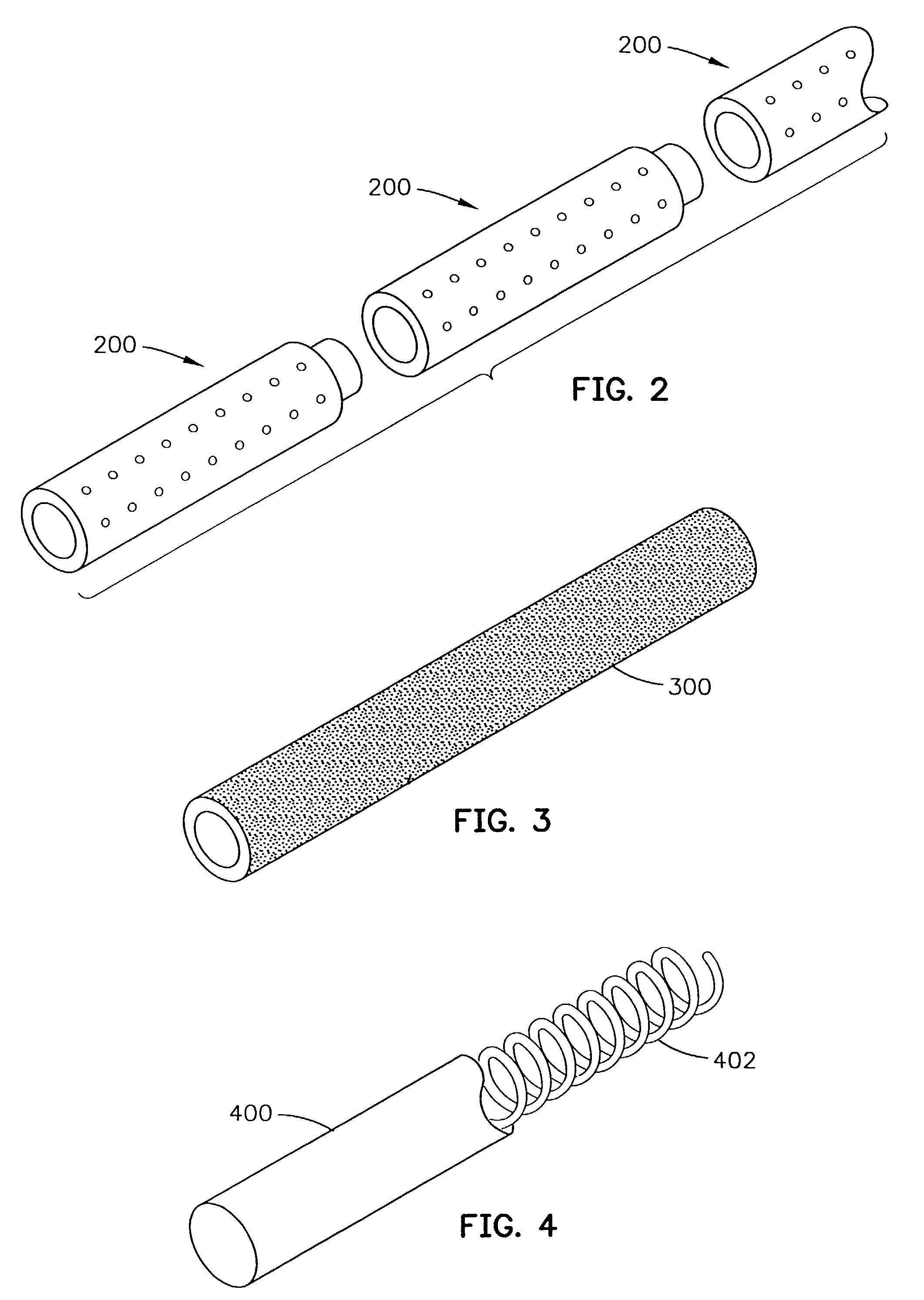System for warming lower extremities of supine persons
a technology for supine people and systems, applied in the field of external, can solve the problems of slow healing of wounds, if ever, and achieve the effect of reducing sensory perception and avoiding thermal injuries
- Summary
- Abstract
- Description
- Claims
- Application Information
AI Technical Summary
Benefits of technology
Problems solved by technology
Method used
Image
Examples
Embodiment Construction
[0023]The nature, objectives, and advantages of the invention will become more apparent to those skilled in the art after considering the following detailed description in connection with the accompanying drawings.
HARDWARE COMPONENTS & INTERCONNECTIONS
[0024]Introduction
[0025]As mentioned above, the invention concerns a warming system, mounted to the foot of a bed, to warm a person's lower extremities by directing air or another warm gas into the space between the mattress and overlaying blankets. Although many different hardware components and configurations may be used, FIG. 1 shows one example embodied by the system 100.
[0026]A person 102 is shown in supine position on a bed 104 that has a head end 104a and foot end 104b. The person is covered by one or more blankets 106. The system 100 employs a blower 110 to direct air into an elongated distribution chamber 108. The chamber 108 includes many tiny exit apertures 109. In one embodiment, the chamber 108 may comprise an otherwise ai...
PUM
 Login to View More
Login to View More Abstract
Description
Claims
Application Information
 Login to View More
Login to View More - R&D
- Intellectual Property
- Life Sciences
- Materials
- Tech Scout
- Unparalleled Data Quality
- Higher Quality Content
- 60% Fewer Hallucinations
Browse by: Latest US Patents, China's latest patents, Technical Efficacy Thesaurus, Application Domain, Technology Topic, Popular Technical Reports.
© 2025 PatSnap. All rights reserved.Legal|Privacy policy|Modern Slavery Act Transparency Statement|Sitemap|About US| Contact US: help@patsnap.com



